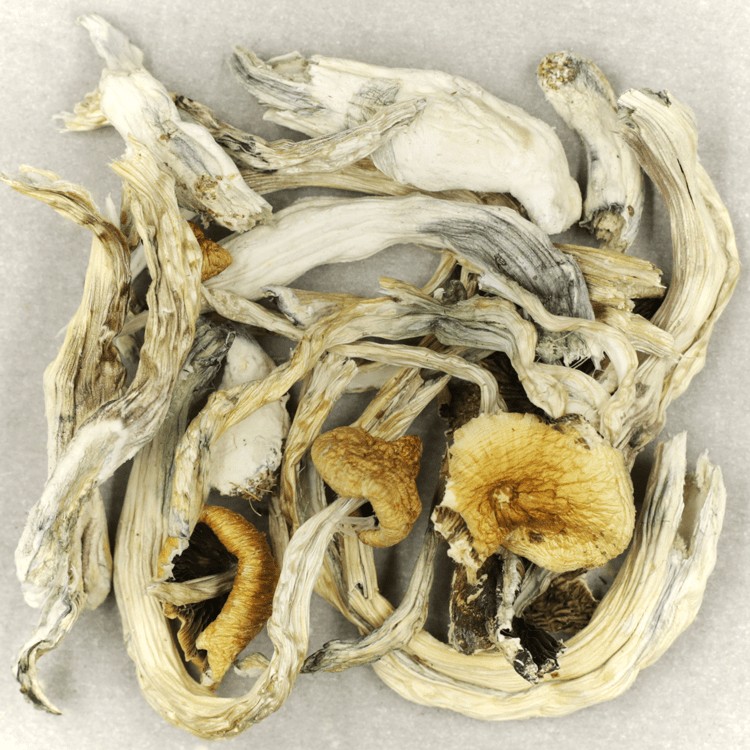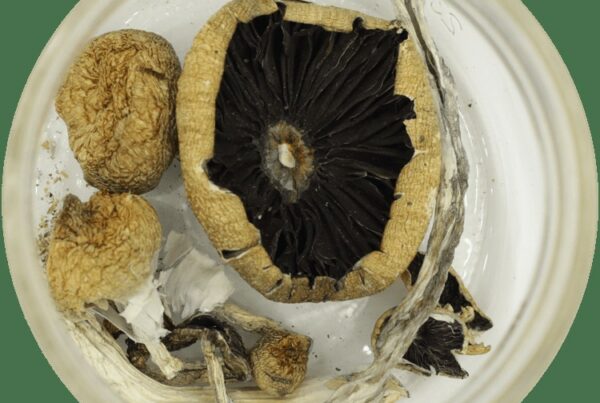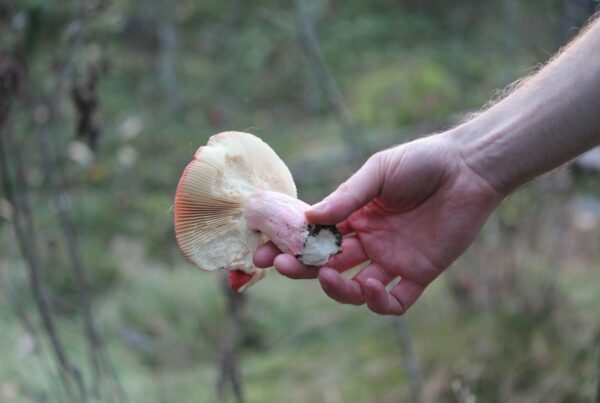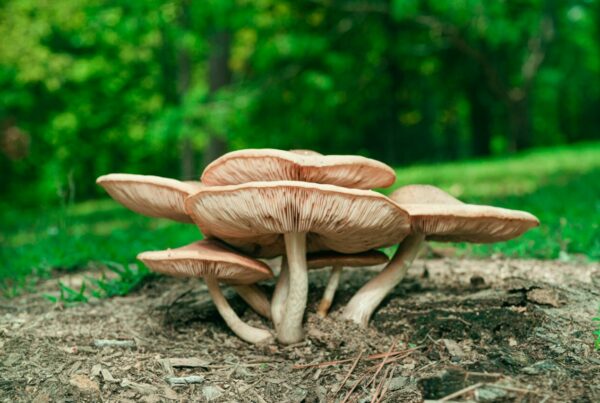The Treasure Coast Mushroom is a sought-after strain of magic mushrooms, celebrated for its ability to boost creative thinking and inspire novel thought patterns.
Writers often experience a phenomenon known as the creative block, which is characterized by difficulty in generating or executing new ideas.
This creative block can be a result of psychological elements like fear of criticism, the pursuit of perfection, or external pressures. While numerous strategies exist to combat this, for some, shrooms may offer a more immediate and profound path to innovative thinking.

Key Takeaways:
- Treasure Coast mushrooms foster creativity by promoting divergent thinking.
- Their high psilocybin concentration temporarily disrupts the brain’s default mode network, enhancing spontaneous brainstorming and self-reflection.
- Even one week after psilocybin ingestion, it can encourage creativity by boosting the ability to conceive new ideas.
Delving into Treasure Coast Mushrooms:
Scientifically referred to as Psilocybe cubensis, these mushrooms originate from the Treasure Coast area of Florida, from which they derive their name. They are recognized for their quick growth.
- They feature a distinctive caramel to golden brown cap that can expand up to 5 centimetres in diameter.
- The cap exhibits wavy edges and resembles a miniature sombrero.
- Under the cap, there lies a thick set of gills that can vary in color from light yellow to a deeper brown.
- Upon reaching maturity, it produces a purple-black spore print.
- The stem is durable and solid, ranging between 5 to 15 centimetres in height. It commonly turns blue when touched, a reaction not merely aesthetic but a chemical indication of the presence of psilocin, a potent psychoactive compound that alters brain function.
Note: Variants with reduced pigmentation, referred to as leucistic strains, can manifest once the strain is identified. These variants often bear a remarkable likeness to the original strain.
Effectiveness and Implications
While it may not rival the strength of potent strains such as Penis Envy, it is still capable of providing an extraordinarily unique psychedelic experience. Users have reportedly experienced typical psilocybin effects, such as mood shifts, heightened sensory awareness, and enlightening insights.
Brief Historical Context in Cultural Scenarios
Historically, the ingestion of mushrooms has roots in ancient societies, with evidence of their use in religious and healing practices across regions from Mesoamerica to modern-day Canada.
These magical fungi were employed by native populations during rituals to foster deep relationships with the spiritual realm, taking advantage of their visionary properties for healing and building community ties.
Scientific Interpretation of Psilocybin’s Effect on Creativity
A recent article published in the Journal of Transnational Psychiatry utilized ultrahigh-field multimodal brain imaging to study these effects in real-time. The research discovered that psilocybin increased the interconnectivity among various brain networks, contributing to heightened spontaneous creativity.
Altering Perception and Cognitive Skills
Following consumption, psilocybin peaks in the bloodstream (15.61 ng/mL) approximately 80 minutes later, leading to reported changes in sensory perception and cognitive abilities.
- Colors seem more vivid
- Objects may appear to pulsate or morph
- Alterations in spatial awareness can occur
There was a noticeable increase in glutamate concentrations within the medial prefrontal cortex, an area linked with complex thinking and decision-making. Conversely, there was a decrease in glutamate levels in the hippocampus, an area related to memory.
Study Outcomes
Does psilocybin boost creativity, or is it merely an illusion? This question is still a matter of debate. However, it’s evident that psilocybin can markedly alter perception and cognitive functions.
Does perception play a role? The Journal of Transnational Psychiatry study explored this aspect by examining “spontaneous” and “deliberate” cognitive processes.Spontaneous creativity refers to sudden, raw ideas that emerge in one’s mind, while deliberate creativity involves focused problem-solving and task-oriented thinking. Studies have found an increase in spontaneous thought patterns, while deliberate thought processes seem to be temporarily suppressed.
- Using methods such as the Picture Concept Task (PCT) and the Alternative Uses Task (AUT), researchers were able to gauge participants’ originality, yielding highly reliable scores of 0.95 and 0.91, respectively.
- After consuming the substance, participants experienced a boost in feelings of insightfulness, indicating a heightened connection to novel ideas.
- Task-oriented thoughts of participants decreased, likely due to the brain establishing unconventional, less restricted connections that overshadowed the structured, linear problem-solving approach.
- Participants showed an elevated generation of unique ideas seven days post-exposure, suggesting that the brain’s restructuring could have long-term effects, enhancing originality even after the consumption period.
Divergent Thinking and Solving Problems
Divergent thinking, the capacity to generate multiple solutions for a single problem, is a fundamental aspect of creativity. By breaking down conventional thinking constraints, the substances allow the brain to consider perspectives that would typically be disregarded as irrational or improbable.
Psychedelic substances administered in doses high enough to induce hallucinations target serotonin 5-HT2A receptors in the brain, disrupting normal thought patterns thereby fostering cognitive flexibility and divergent thinking. This mechanism potentially paves a way for unlocking creativity.
Guidance for Writers Exploring Treasure Coast Mushrooms
Feeling stuck in a creative rut? Mushrooms could potentially provide a boost to your creativity. If you’re new to this, it’s recommended to start with small doses to safely experience the creativity-enhancing effects of this fascinating substance.
Dosage Recommendations for Creative Exploration
| Microdose (0.1 – 0.3 grams) | This dose won’t lead to visual effects but can enhance focus, mood, and creativity without altering your daily routine. |
| Low Dose (0.5 – 1 gram) | This dosage may enhance minor alterations in sensory perception and mood. |
| Medium Dose (1 – 2 grams) | At this dosage, expect more noticeable effects, such as visual disturbances, an increased sense of interconnectedness, and deeper emotional responses. |
Understanding the Importance of “Intent” and “Setting”
- Intent: Before starting, take some time to reflect on your goals. Are you seeking to generate fresh ideas? Explore deeper into your character’s mind. Enter the session with an open mindset, prepared for possible psychological discovery.
- Setting: The optimal space is one that’s comfortable and familiar. Consider a peaceful room, potentially equipped with mood-lifting items like soft lighting, calm instrumental music, and a handy notepad. If possible, let a trusted friend know about your session or have them present as a sober, encouraging “trip-sitter” just in case.
Techniques to Try While Under the Influence
Free Flow Writing
Psilocybin often lowers one’s usual inhibitions and encourages effortless thoughts. This means writing down anything that comes to mind without self-editing, judging, or worrying about its logical flow.
Continuous Association
An interesting exercise is writing down words as they pop up, even if they seem unrelated. This might help connect unrelated thoughts, so record any words that come up, follow the thought trail wherever it goes, and see if you can detect new themes or patterns for your work.
Dialogue with Characters
If you’re working on a fiction piece, try having a direct conversation with your characters. This can blur the line between creator and creation, allowing you to dive into different viewpoints. Ask questions like, “What’s your next move?” or “What frightens you?” Write down their “replies” as they come to you.
Wrapping Up Your Creative Journey
As a member of the Psilocybe cubensis species, Treasure Coast has qualities that enhance the creative process, fostering increased introspection, sensory perception, and openness.
For authors, this isn’t
Creativity isn’t solely about fleeting inspiration; it entails utilizing an instrument that can surmount creative impediments, magnify sensory nuances, and promote distinctive modes of expression. Remember, psilocybin, procured from a shroom online, is a catalyst, not a substitute for innate talent or persistent dedication.
Frequently Asked Questions
How can one reflect on and incorporate the psilocybin experience?
After the session, it’s vital for writers to scrutinize their notes or recorded reflections and pinpoint any recurring themes, symbols, or emotions that align with their work. Keeping a “trip journal” and summarizing emerging ideas or emotional shifts can assist them in deciphering their experience.
How long do the creative effects of Treasure Coast mushrooms last?
The effects endure for 4-6 hours, but the spike in creativity might extend for several days. Enhanced creativity, particularly in the production of fresh ideas, can persist even a week after a session. This “afterglow” period, marked by increased open-mindedness and cognitive adaptability, is an ideal time to refine or develop the ideas explored during the experience.
Are there any famous writers or artists who have used psychedelics for creative inspiration?
The author Aldous Huxley experimented with mescaline and later LSD, documenting his experiences in The Doors of Perception. Counterculture writers like Allen Ginsberg and Jack Kerouac are also recognized for their psychedelic use, as are musicians such as The Beatles.
Albeit they didn’t specifically use Treasure Coast, their work exemplifies the enduring bond between psychedelics and creativity in the spheres of art and literature.





